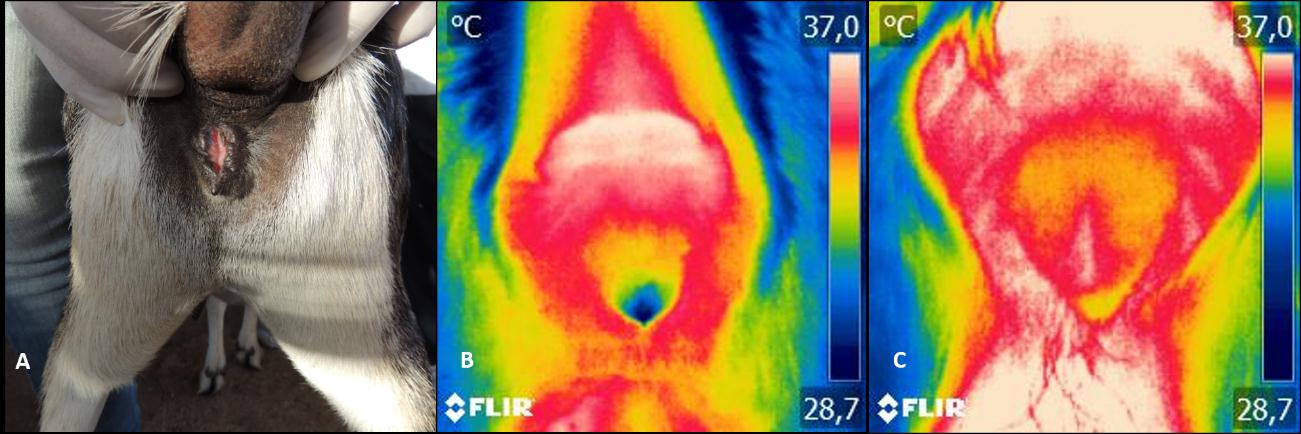Detecting estrus in Canindé goats by two infrared thermography methods
DOI:
https://doi.org/10.21708/avb.2018.12.2.7243Abstract
The aim of study was to evaluate the diagnosis of estrous in Canindé goats used infrared thermographic images. The Canindé goats used in experiment, belong to Production Center of Small Ruminants. The goats were subjected to estrus induction and monitored with regard to their behavior and blood levels of hormones. Temperature measurements were continuous during estrous signs and even disappearance of behavioral characteristics. Were evaluated different areas in females: vulva, perivulvar, dorse and venter regions, delimited by a quadrant that allowed the specification of assessed region. In addition to specific behavior of estrus in ruminants were observed in vulvar region perivulvar signals swelling and redness and parallel identified the temperature rise of region by thermographic images. Were observed in vulvar region perivulvar signals swelling and redness and parallel identified the temperature rise of that region by thermographic images in goats in estrus. There was a significant effect for all temperatures of the regions evaluated for the thermographic images and infrared thermometer, except for the temperature of the vulvar region. The temperatures measured using the thermographic camera submitted a difference in the data set, allowing measurements observed higher temperatures compared with the temperatures measured with an infrared thermometer. So, due the precision and speed of the method the thermographic images used for detecting estrus is applicable and important. In animal production, thermography has seen used in detection of metabolic disorders, diseases and infections. In addiction, is used in understanding thermoregulation due to chenges in temperature and the impact of environmental conditions.
Downloads

Downloads
Published
Issue
Section
License
Autores que publicam na Acta Veterinaria Brasilica concordam com os seguintes termos: a) Autores mantém os direitos autorais e concedem à revista o direito de primeira publicação, com o trabalho simultaneamente licenciado sob a Licença Creative Commons Attribution que permite o compartilhamento do trabalho com reconhecimento da autoria e publicação inicial nesta revista. b) Autores têm autorização para assumir contratos adicionais separadamente, para distribuição não-exclusiva da versão do trabalho publicada nesta revista (ex.: publicar em repositório institucional ou como capítulo de livro), com reconhecimento de autoria e publicação inicial nesta revista. c) Autores têm permissão e são estimulados a publicar e distribuir seu trabalho online (ex.: em repositórios institucionais ou na sua página pessoal) a qualquer ponto antes ou durante o processo editorial, já que isso pode gerar alterações produtivas, bem como aumentar o impacto e a citação do trabalho publicado (Veja O Efeito do Acesso Livre).


 Esta obra está licenciada com uma Licença
Esta obra está licenciada com uma Licença 